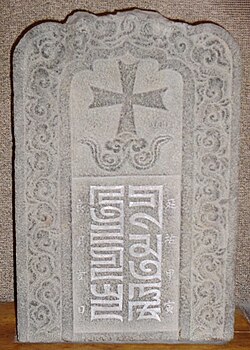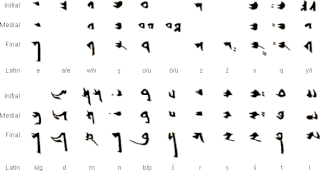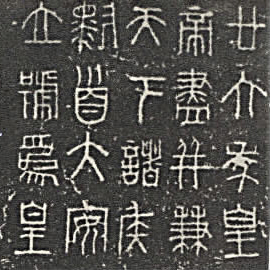
Many alphabets have been devised for the Mongolian language over the centuries, and from a variety of scripts. The oldest, called simply the Mongolian script, has been the predominant script during most of Mongolian history, and is still in active use today in the Inner Mongolia region of China and de facto use in Mongolia. It has spawned several alphabets, either as attempts to fix its perceived shortcomings, or to allow the notation of other languages, such as Sanskrit and Tibetan. In the 20th century, Mongolia first switched to the Latin script, and then almost immediately replaced it with the Cyrillic script for compatibility with the Soviet Union, its political ally of the time. Mongol Chinese in Inner Mongolia and other parts of China, on the other hand, continue to use alphabets based on the traditional Mongolian script.

Outer Mongolia was a territory of the Manchu-led Qing dynasty (1691–1911). Its area was roughly equivalent to that of the modern state of Mongolia, which is sometimes called "North Mongolia" in China today, plus the Russian republic of Tuva. While the administrative North Mongolia only consisted of the four Khalkha aimags, in the late Qing period "North Mongolia" was also used to refer to Khalkha plus Oirat areas Khovd and the directly-ruled Tannu Uriankhai.

The Soyombo alphabet is an abugida developed by the monk and scholar Zanabazar in 1686 to write Mongolian. It can also be used to write Tibetan and Sanskrit.

Drogön Chogyal Phagpa, was the fifth leader of the Sakya school of Tibetan Buddhism. He was also the first Imperial Preceptor of Kublai Khan's Yuan dynasty, division of the Mongol Empire, and was concurrently named the director of the Bureau of Buddhist and Tibetan Affairs. Historical tradition remembers him as the first vice-ruler of Tibet under the Mongol Khagan as well as one of the Five Sakya patriarchs. Although this is historically disputed, he played a very important political role.
Gari Keith Ledyard is Sejong Professor of Korean History Emeritus at Columbia University. He is best known for his work on the history of the Hangul alphabet.
The Lifan Yuan was an agency in the government of the Qing dynasty which supervised the Qing Empire's frontier Inner Asia regions such as its Mongolian dependencies and oversaw the appointments of Ambans in Tibet.

The classical or traditional Mongolian script, also known as Hudum Mongol bichig, was the first writing system created specifically for the Mongolian language, and was the most successful until the introduction of Cyrillic in 1946. Derived from the Old Uyghur alphabet, Mongolian is a true alphabet, with separate letters for consonants and vowels. The Mongolian script has been adapted to write languages such as Oirat and Manchu. Alphabets based on this classical vertical script are used in Inner Mongolia and other parts of China to this day to write Mongolian, Xibe and experimentally, Evenki.
The Korean alphabet is the native script of Korea, created in the mid fifteenth century by King Sejong, as both a complement and an alternative to the logographic Sino-Korean hanja. Initially denounced by the educated class as eonmun, it only became the primary Korean script following independence from Japan in the mid-20th century.
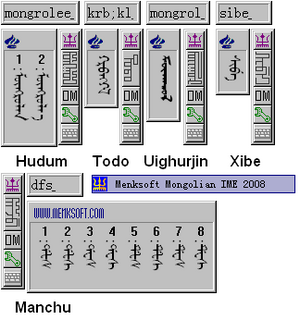
Menksoft Mongolian IME is an input method editor made by Menksoft for typing Mongolian writing systems such as:
Menksoft is an IT company in Inner Mongolia, who developed Menksoft Mongolian IME, the most widely used Mongolian language input method editor (IME) in Inner Mongolia.

A paiza or paizi or gerege was a tablet carried by Mongol officials and envoys to signify certain privileges and authority. They enabled Mongol nobles and officials to demand goods and services from civilian populations.
Junast was a Chinese linguist of Mongolian ethnicity who specialized in the study of the Monguor language, Eastern Yugur language and the 'Phags-pa script.
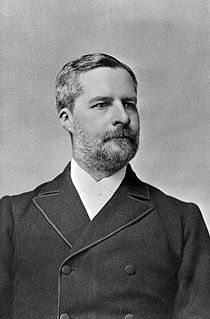
Stephen Wootton Bushell CMG MD was an English physician and amateur Orientalist who made important contributions to the study of Chinese ceramics, Chinese coins and the decipherment of the Tangut script.

Tibet under Yuan rule refers to the Yuan dynasty's rule over Tibet from approximately 1270 to 1354. During the Yuan rule of Tibet, the region was structurally, militarily and administratively controlled by the Mongol Yuan dynasty, a division of the Mongol Empire. In the history of Tibet, The Mongol rule was established after Sakya Pandita got power in Tibet from the Mongols in 1244, following the 1240 Mongol conquest of Tibet led by the Mongol general with the title doord darkhan. It is also called the Sakya dynasty after the favored Sakya school of Tibetan Buddhism.
Old Mandarin or Early Mandarin was the speech of northern China during the Jin and Yuan dynasties. New genres of vernacular literature were based on this language, including verse, drama and story forms, such as the qu and sanqu.
Menggu Ziyun is a 14th-century rime dictionary of Chinese as written in the 'Phags-pa script that was used during the Yuan dynasty (1271–1368). The only surviving examplar of this dictionary is an 18th-century manuscript copy that belonged to Stephen Wootton Bushell (1844–1908), and is now held at the British Library. As the only known example of a 'Phags-pa script dictionary of Chinese, it is important both as an aid for interpreting Yuan dynasty texts and inscriptions written in Chinese using the 'Phags-pa script, and as a source for the reconstructed pronunciation of Old Mandarin.
Phags-pa is a Unicode block containing characters from the 'Phags-pa script promulgated as a national script by Kublai Khan. It was used primarily in writing Mongolian and Chinese, although it was intended for the use of all languages of the Mongol Empire.

The Pentaglot Dictionary, also known as the Manchu Polyglot Dictionary, was a dictionary of major imperial languages compiled in the late Qianlong era of the Qing dynasty. The work contains Manchu lexemes and their translations into various administrative languages such as Tibetan, Mongolian, post-classical or vernacular Chagatai and Chinese.

The horizontal square script is an abugida developed by the monk and scholar Zanabazar to write Mongolian. It can also be used to write Tibetan and Sanskrit.
